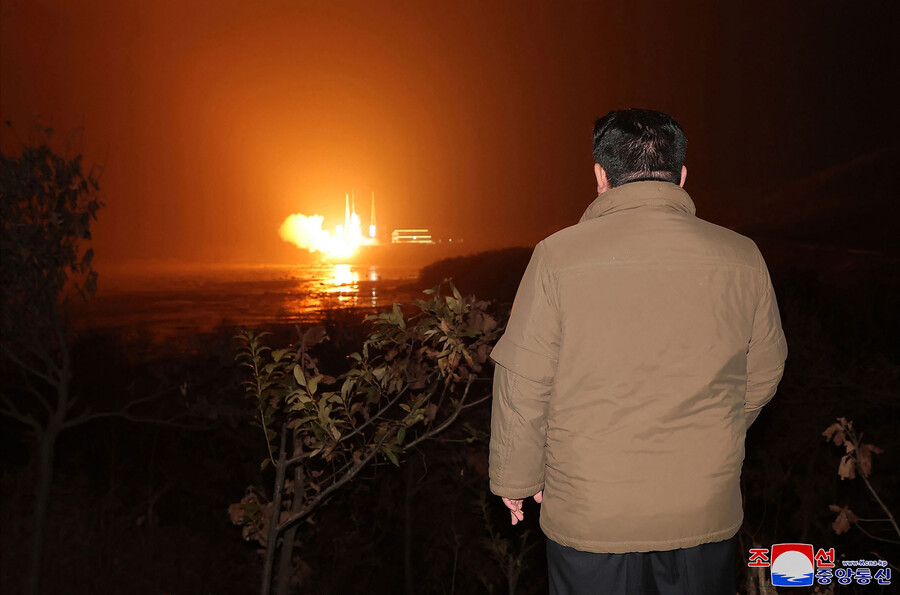-
[시사 | 역사] (이코노미스트) 북한 군사 정찰 위성 발사, 한반도 안정에 미칠 영향은?2023.11.27 PM 12:17

이코노미스트 기사 요약 (ChatGPT)
북한은 최근 두 번의 실패한 시도 끝에 최초의 군사 정찰 위성 발사에 성공했다고 주장했습니다. 한국도 곧 자체 정찰 위성을 발사할 계획입니다. 두 나라 모두 방어력을 강화하고 전략적 이점을 얻기 위해 노력하고 있으며, 이를 통해 더 나은 감시와 잠재적인 선제적 조치가 가능합니다.
정찰 위성을 보유하면 한국의 "킬 체인" 선제 공격 시스템이 북한의 핵 무기에 대응할 수 있고 잠재적 위협에 대한 신뢰할 만한 정보를 제공할 수 있습니다. 북한의 경우 잠재적 침략에 대한 조기 경보 능력을 갖는 것이 중요합니다. 그러나 단일 위성의 사용은 제한적이며 효과적인 실시간 모니터링을 위해서는 위성 네트워크가 필요합니다. 한국은 2025년까지 5개의 위성을 발사할 계획입니다.
위성 기술 분야에서 남북의 개발 경로는 달랐습니다. 한국은 미국이 최근까지 로켓 능력에 대한 제한을 가했기 때문에 위성 및 이미징 기술에 중점을 두었습니다. 반대로, 북한의 위성 프로그램은 탄도 미사일 프로그램에서 파생되었습니다. 한국의 위성이 더 정교하지만 북한은 러시아에 무기를 제공하는 대가로 기술 이전을 받고 있는 것으로 보입니다.
최근 북한이 인공위성 발사를 지연시킨 것은 러시아로 부터 전수받은 기술을 적용하기 위해서였다는 추측이 있습니다. 한편 한국은 미국과의 협력을 강화하여 자국에 미국 우주군 부대를 배치하고 미국 및 일본과 실시간 미사일 발사 데이터를 공유할 계획입니다.
북한의 군사력을 강화할 수 있음에도 불구하고, 우주 경쟁은 한반도의 안정을 증가시킬 수 있습니다. 군사 이동과 활동에 대한 더 나은 통찰력을 제공하여 오해 또는 잘못된 위협을 줄일 수 있습니다. 일부 전문가들은 핵무기가 있는 북한에 더 나은 정보를 제공하는 것이 지역 안정에 더 바람직할 것이라고 제안합니다.
=======================================================
(Economist) Will North Korea’s new spy satellite make the region safer?
https://www.economist.com/asia/2023/11/22/will-north-koreas-new-spy-satellite-make-the-region-safer
The Korean space race has big implications for the peninsula’s security

Kim Jong Un inspecting the launch of a rocket carrying the reconnaissance satellite 'Malligyong-1' from the Sohae Satellite Launch Site in North Korea. Image : KCNA/AP
The two bitterly opposed parts of the Korean peninsula have something in common: stratospheric ambition. After trying and failing twice to put its first military spy satellite into orbit earlier this year, North Korea claimed to have succeeded on November 21st. South Korea plans to put its first spy satellite into orbit on November 30th. This emerging space race has big implications for regional security.
Possessing reconnaissance satellites would improve both Koreas’ ability to defend against, or attack, the other. Up-to-date information is crucial to South Korea’s “Kill Chain”, the pre-emptive strike system it is developing to deter the North from using its nuclear arsenal. Being able to pinpoint the whereabouts of North Korea’s leaders would also lend credibility to the South’s threat to eliminate them if they ever threaten it. The North, deeply fearful of an American invasion, would for its part get early warning of troop movements against its frontier. If war broke out, satellites could help both sides locate and destroy each other’s forces.
A lone satellite would be of limited use, however. Anything resembling real-time monitoring requires a network. South Korea therefore plans to launch five satellites by 2025. Kim Jong Un, North Korea’s dictator, said last year he had tasked his scientists with launching “a large number of reconnaissance satellites”. Such a constellation would have more resilience against technical failure or attack.
Both Koreas have been developing satellites for decades. Yet they have followed different paths, explains Daniel Pinkston of Troy University in Alabama. Fearing an arms race on the peninsula, America convinced South Korea in 1979 to accept limits on its rocketry technology, which can be used for both satellites and ballistic missiles. South Korea instead focused on satellite and imaging technology. As a result its first spy satellite will probably be more sophisticated than North Korea’s, with better capability to see through cloud cover and at night. South Korea’s launch capability is relatively rudimentary, even though America began easing the restrictions in 2001 and scrapped them in 2021. SpaceX, an American rocketry firm, will put the South’s satellite into orbit.
North Korea’s satellite programme was in essence a spin-off from its ballistic-missiles one. The country has now put three satellites into orbit in all. There is scant evidence that the first two are capable of much. But a promise of help from Vladimir Putin, made when Mr Kim went to Russia to visit the country’s president in September, may have helped. South Korea’s government says Russia is giving the North technical assistance on satellites in return for arms to wage war on Ukraine. If that is right, the North Koreans may have missed an earlier launch deadline, set for October, because they were making Russian-inspired improvements to their latest satellite and its launch vehicle.
How much Russian assistance North Korea can expect for its programme is unclear—and a military space programme is a long-term project. The South has more reliable friends, primarily America. Over the past two years space-based co-operation between the two countries has taken on an increasingly military dimension. In 2022 America deployed a unit of its Space Force service to South Korea. After the defence ministers of America, Japan and South Korea held a rare trilateral meeting on November 12th, South Korea’s defence ministry said the three countries would start sharing data on missile launches in real time from December.
The space race seems certain to improve North Korea’s military capabilities. Yet it could also increase stability on the peninsula, says Ankit Panda of the Carnegie Endowment for International Peace, a think-tank in Washington. If the North had a better understanding of America’s and South Korea’s military movements, including frequent training exercises, it might be less likely to mistake innocuous activity for a potential threat. “Given that North Korea has nuclear weapons”, says Mr Panda, “I would prefer it to have better eyes and ears than the opposite.” ■
user error : Error. B.